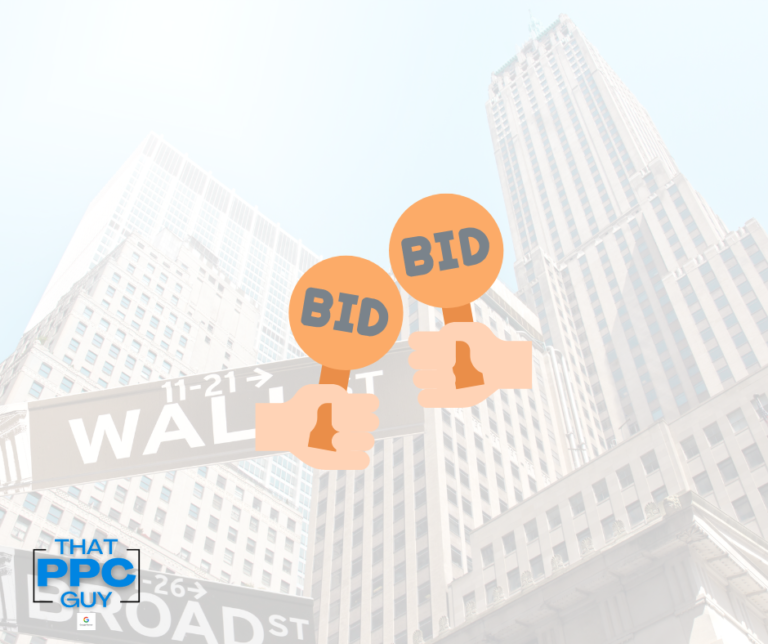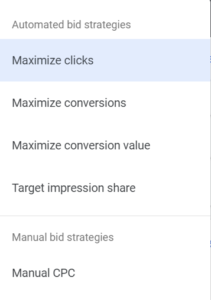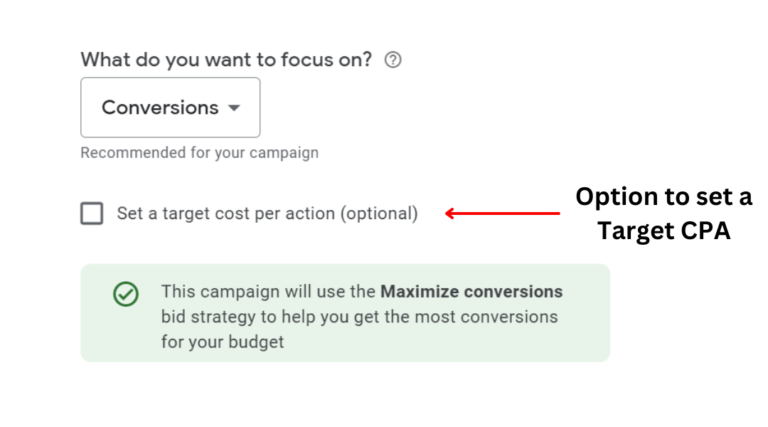Sign Up For Our Newsletter

When I launched my first Google Ads campaign (it was Google Adwords back in the day!) I had one option for winning bids at auction time: Manual CPC. I set my bids and crossed my fingers. Campaigns required daily check-ins to make sure you weren’t being outbid. No one liked seeing their bids in red font! Optimization was more of an art, trying to determine what was a quality bid without overspending. It was exhausting.
Then in 2010 Google introduced Enhanced CPC, which allowed Google to increase your bid by 30% if they felt there was a high chance for a conversion. This required less daily management knowing Google had your back at auction time. Enhanced CPC still exists today, and I use it frequently for branded search campaigns where I want to control the bid.
A quick look at the bid strategies available in 2023. All but one are automated strategies that use machine learning to improve performance.

I still use Manual CPC for Branded Search Campaigns. For exact match branded search queries I should earn a 10/10 Quality Score and still earn a high impression share without over spending. I typically cap bids around .50 using Manual CPC or enhanced CPC and monitor. The goal is to earn quality traffic without cannibalizing too much of your organic traffic and wasting ad dollars in the process.
Fast forward and today we have a handful of automated bid strategies: Target Impression Share, Maximize Clicks, Maximize Conversions, Target CPA, etc. There’s a bid strategy for every type of campaign goal Google has to offer. So how do you choose which strategy is right for you?
Besides the branded search campaign mentioned above, let’s assume a local business has the objective to increase leads by bidding on relevant keywords to their product/services. In this case I would build a search campaign using a maximize click strategy to start. I want to attract as many impressions as I can with firm boundaries around my campaign. These boundaries include:
– Use a healthy negative keyword list to prevent ir-relevant searches
– Strict geography settings (again, assuming a local business not wanting to advertise nationally)
– Strong Ad Strength using call-to-actions
– Create an ad schedule if relevant
And this last one is huge….
– Use a well developed landing page or website that clearly conveys the business’s product/service and offers multiple ways for a customer to contact the business (address, forms, phone number, etc).
The new campaign is launched with Maximize Clicks and I’m going to watch two reports really closely: My Search Term Report, and the Auction Insight Report. I want to make sure I’m attracting the right visitor by analyzing the Search Term Report, which literally shows what someone typed into the Google Search Bar that prompted an ad impression. Are my search queries relevant? How close of a match are they to my keywords (I use phrase match by default)?
The Auction Insight Report will tell me how otern my ads showed up for the available searches. For this report Google looks at the keywords your bidding on and using previous search history determines how often they need to show your ad. Are your ads showing up for 30% of available searches? Or less than 10%? A low Search Impression Share means you’re missing out on valuable clicks, probably during peak search hours. You can improve Impression Share by increasing your budget, refining your keyword list, and changing your geographical settings. I love this report and most business owners do once I share it with them. It also shows the competition and their Search Impression Share
One note about Search Impression Share, I’ll have to write a whole post on it, because a good Impressions Share varies by industry. A local hair salon in a small community should easily shoot for 40% or higher. On the other hand, a roofer will probably see more than a dozen competitors at any time and 25-30% might be a good number to shoot for. The goal for this exercise is to make sure it’s higher than 10%.
When these two reports look strong it’s time to review conversions. The campaign objective I’m using in this scenario is to increase leads through form submissions and phone calls. I use Google Tag Manager and conversion set up in GA4 to track these. I need to see consistent conversions and a total of at least 40 (this is Googles recommendation). Once we’ve achieved that it’s time to go into Campaign Settings and switch to a conversion based bid strategy, like Maximize Conversions. Depending on the clients industry I may use a Target CPA also.

That’s also a whole other post! Understand for some industries it’s very important to keep leads under a certain cost. A company selling residential windows might have a higher threshold for lead cost than a tree trimming business. WordStream has maintained a great list of industry benchmarks to use which I’ll link HERE.
Once I’ve switched the conversion based bid strategy I will also change my keywords to broad match. Remember I’ve camped out in my search term report for a while now, have a healthy negative keyword list and have refined my keywords to improve impression share. Switching to broad match can only happen if I agree with the previous sentence!
For extra credit make sure your audience targeting is honed in. If you can upload a customer list, and build a custom audience segment. Combined these signals work very well using a conversion based bid strategy.
Using a conversion based bid strategy is something to graduate to, not launch with. Make the switch after you’ve honed in your audience, keywords, and confirmed at least 40 conversions.
You might consider using a Target CPA along with Maximize Conversions after you do make the switch. This will help control the cost per acquisition. If you are unsure about what to use you can use third parties like WordStream. If the leads received are quality leads you can also use your ad spend and total lead count to get an idea of your current CPA. Google tracks this for you and you can add it to your campaigns metrics.
Lastly, consider using a small portion of the budget for an exact match branded search campaign using Manual CPC. Again I cap these bids around .50., then add the branded keywords to the negative keyword list in the other campaigns.